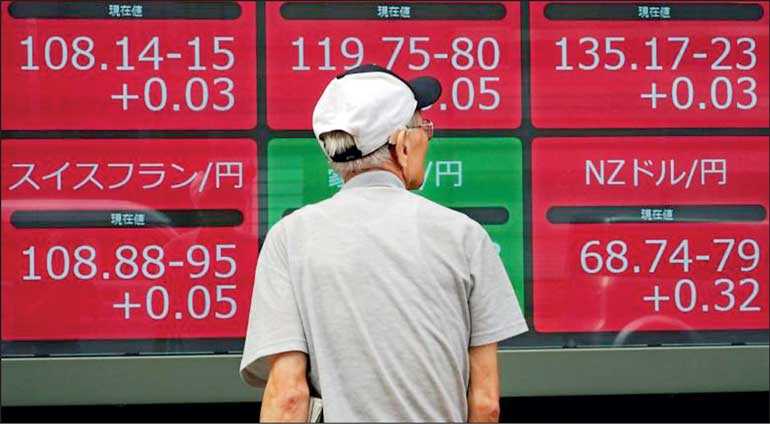Sunday Jan 11, 2026
Sunday Jan 11, 2026
Friday, 20 September 2019 00:00 - - {{hitsCtrl.values.hits}}

TOKYO (Reuters): Asian shares turned lower on Thursday after the US Federal Reserve cut interest rates as expected but signalled a higher bar to further policy easings.
Treasury yields rose broadly and the curve flattened as Fed Chairman Jerome Powell took a cautious approach to any further reductions in borrowing costs, while division among central bankers has increased uncertainty over how much further rates might fall.
MSCI’s broadest index of Asia-Pacific shares outside Japan fell 0.36%. Hong Kong shares shed 0.96%, but Japan’s Nikkei rose 1.01%.
The yen rose from a seven-week low versus the dollar and held onto those gains after the Bank of Japan kept policy on hold, as expected, but signalled it could ease next month.
Central banks around the world have been loosening policy to counter the risks of low inflation and recession. Easier monetary policy has generally supported equities.
However, some analysts argue that a bond market rally has gone too far, saying yields have fallen too fast and curves flattened too much. Others are worried about the growing amount of sovereign debt with negative yields. US stock futures fell 0.23% in Asia on Thursday. The S&P 500 reversed losses to end 0.03% higher after Powell said he did not see an imminent recession or think the Fed will adopt negative rates.
The Fed cut interest rates for a second time this year to 1.75%-2.00% in a 7-3 vote but signalled further cuts are unlikely as the labour market remains strong.
The rate cut was widely expected, but the split vote has raised some concern about predicting the future path of monetary policy.
So-called dot-plot forecasts from all 17 policymakers showed even broader disagreement, with seven expecting a third rate cut this year, five seeing the current rate cut as the last for 2019, and five who appeared to have been against even Wednesday’s move.
The yield on benchmark 10-year Treasury notes rose to 1.8013%, while the two-year yield rose to 1.7703%.
The spread between two- and 10-year Treasury yields, the most commonly used measure of the yield curve, was near the lowest since Sept. 9.
The curve inverted on Aug. 14 for the first time since 2007 when long-term yields traded below short-term yields, a widely accepted indicator of coming recession.
The Australian dollar fell 0.5% to $0.6793 after data showed the nation’s jobless rate rose slightly to 5.3% in August, bolstering expectations for the central bank to cut rates.
The yen rose around 0.3% to 108.14 per dollar.